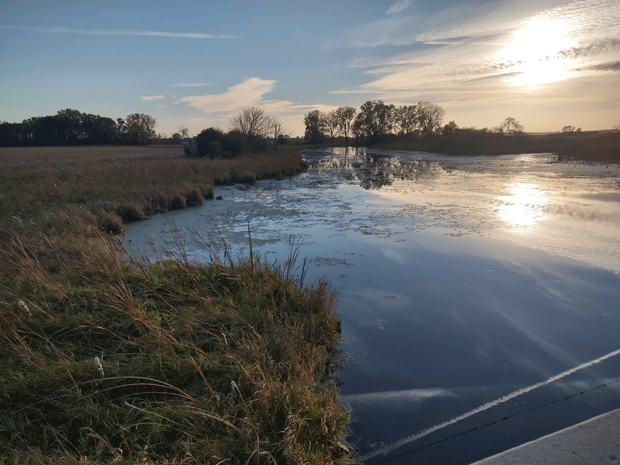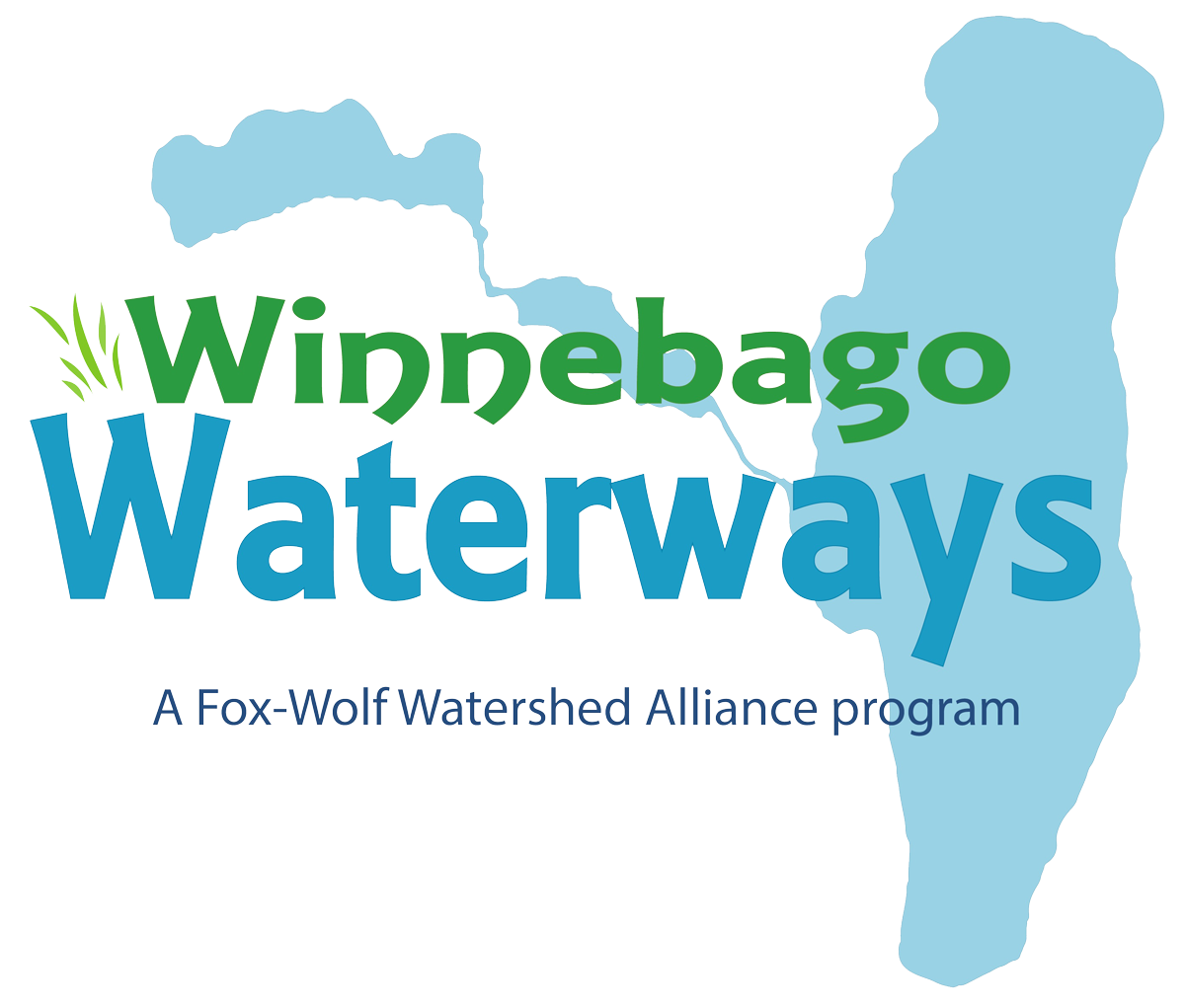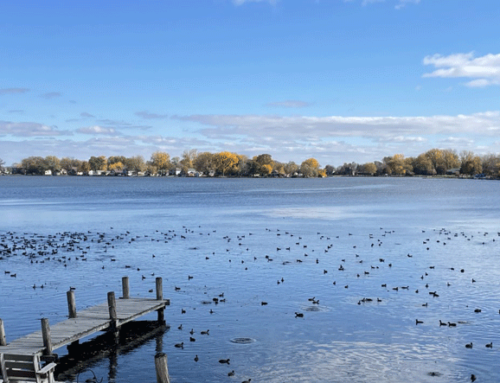The 2022 season for our Winnebago Waterways Recovery Area Water Quality Monitoring Program has wrapped up!
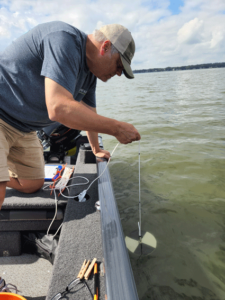
Gary Doering, a lake water quality volunteer, uses a secchi disk to measure water clarity
Winter has definitely arrived in the Winnebago System but before the ice started forming, our great water quality monitoring volunteers completed another year of data collection. In 2022, 14 volunteers sampled 12 sites once a month from May – October. The goal of the water quality monitoring program is to characterize total phosphorus concentrations along with associated chemical, physical, and biological characteristics in the Winnebago Lakes and priority tributaries. These sites are monitored in addition to sites monitored by the WDNR and other data collection groups to maximize data collection. Monitoring data are used to better inform recovery efforts in the Winnebago Waterways Recovery Area as well as assess the effectiveness of management actions aimed to improve and protect our water resources.
Our volunteers are vital to our efforts!
Volunteers that collected data at stream locations record dissolved oxygen levels, temperature, transparency, conductivity, pH, and streamflow of the water, and some collect water samples for further lab analysis for parameters like total phosphorus. In addition, stream volunteers collect benthic macroinvertebrates which are critters without a backbone that live on the bottom of aquatic environments. By collecting these critters, we can get a better idea of stream health depending on what species are present and which are absent. This year, volunteers found a variety of species including dragonfly larvae, orb snails, and even some crayfish!
Volunteers that collected data in the Winnebago Lakes also record information like dissolved oxygen levels, temperature, transparency, conductivity, and pH throughout the water column, and some collected water samples for lab analysis. These volunteers also did a great job letting us know about algae blooms on the water.
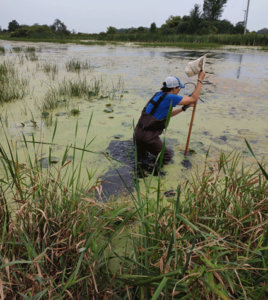
Steph Daniels treks through muck to reach the sampling site. Thanks for your dedication!!
We also were lucky enough to have a wonderful volunteer enter our data into the Wisconsin DNR’s Surface Water Integrated Management System (SWIMS) database so the data can be accessed by the public.
The data collected by our wonderful volunteers are extremely valuable to both the Winnebago Waterways Program and to the state as a whole.
THANK YOU VOLUNTEERS!!
Our hardworking volunteers work around uncooperative weather and sometimes challenging terrain to collect important data. The methods used for the WQMP are based on statewide monitoring programs such as the Water Action Volunteers (WAV), Citizen Lakes Monitoring Network (CLMN), and Wisconsin DNR Long-term Trend monitoring (LTT).
If you are interested in learning more or becoming a volunteer, check out our Winnebago Waterways Recovery Area Water Quality Monitoring Program site (CLICK HERE) or contact Katie Reed, Winnebago Waterways Program Coordinator at katherine@fwwa.org or 920-851-6472.
Winnebago Waterways is a Fox-Wolf Watershed Alliance recovery initiative. Contact us at wwinfo@fwwa.org


